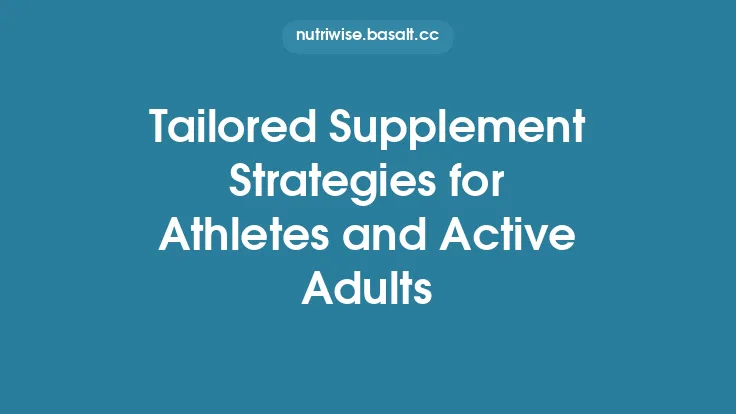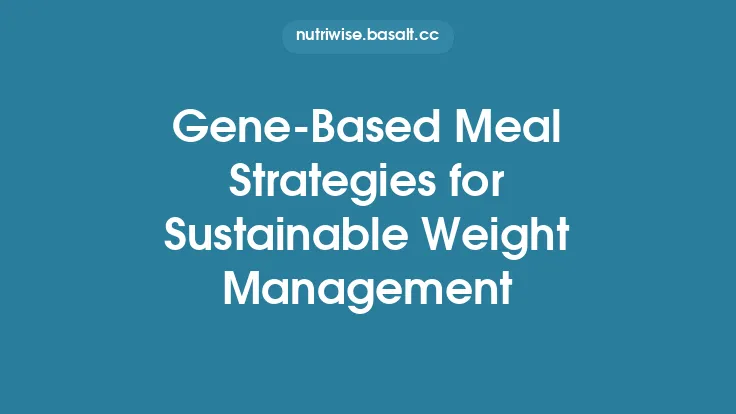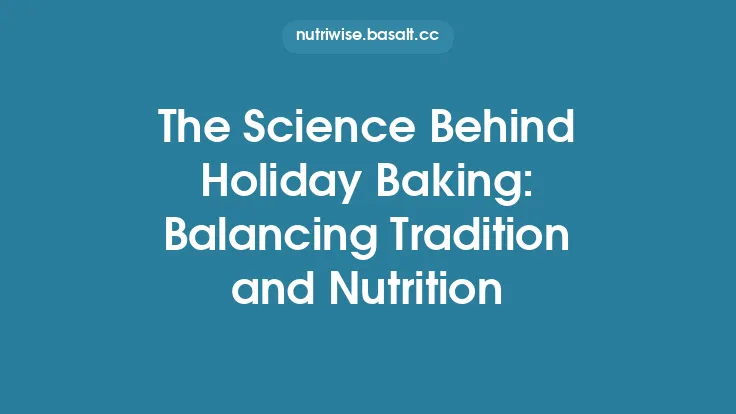Holiday gatherings are a time of connection, celebration, and abundant food. While the focus often lands on the dishes that grace the table, staying properly hydrated is equally essential for enjoying the festivities to their fullest. The colder air of winter, the presence of alcohol, and the excitement of socializing can all conspire to leave guests feeling parched or, conversely, over‑indulging in sugary drinks that undermine health goals. By weaving thoughtful hydration strategies into the fabric of the celebration, hosts and participants alike can honor cultural traditions, support bodily function, and keep the merriment flowing smoothly.
Understanding Holiday Hydration Needs
The human body loses water continuously through respiration, perspiration, and urinary output. During holiday events, several factors can increase these losses:
| Factor | How It Affects Fluid Balance |
|---|---|
| Ambient Temperature | Even in cold climates, indoor heating creates dry air that accelerates transepidermal water loss. |
| Alcohol Consumption | Ethanol is a diuretic; it suppresses antidiuretic hormone (ADH) release, prompting the kidneys to excrete more water. |
| Spicy or Salty Foods | High sodium content raises plasma osmolality, stimulating thirst and increasing urinary output. |
| Physical Activity | Dancing, cooking, and serving food raise metabolic heat production, leading to sweat even in cooler environments. |
| Age | Children and older adults have reduced thirst perception, making them more vulnerable to dehydration. |
The general recommendation for daily fluid intake is about 2.7 L for women and 3.7 L for men, but these values can shift upward during social events. A practical rule of thumb for holiday gatherings is to aim for an additional 0.5–1 L of fluid per person over the course of the evening, adjusting for the presence of alcohol and the intensity of activity.
Cultural Practices and Traditional Beverages
Many cultures already embed hydration into their festive customs, offering a valuable starting point for modern hosts:
- Scandinavian Glögg & Water Pairings – In Nordic holiday traditions, the spiced mulled wine (glögg) is often accompanied by a glass of water or a light herbal tea, encouraging guests to sip between alcoholic servings.
- Japanese Osechi‑ri and Amazake – The New Year’s osechi‑ri boxes are balanced with small servings of amazake, a low‑alcohol, fermented rice drink that provides both hydration and a modest amount of electrolytes.
- Middle Eastern Qamar al‑Dīn – This apricot‑based drink, served chilled, offers natural sugars and potassium, making it a hydrating alternative to plain water during Ramadan’s festive meals.
- Mexican Ponche Navideño – While traditionally a warm fruit punch, many families serve a separate jug of agua fresca (lightly sweetened water infused with fruit) to keep guests hydrated.
By highlighting these existing practices, hosts can honor cultural heritage while reinforcing the importance of fluid intake.
Practical Hydration Planning for Hosts
- Create a Dedicated Hydration Station
- Position a water dispenser, pitcher, or large glass carafe in a high‑traffic area.
- Offer a variety of infused options (cucumber‑mint, citrus‑rosemary, cranberry‑lime) to add flavor without excess sugar.
- Include reusable glasses or eco‑friendly cups to reduce waste.
- Balance Alcoholic and Non‑Alcoholic Options
- For every alcoholic beverage served, provide a non‑alcoholic counterpart of equal volume.
- Use a “one‑for‑one” rule: when a guest finishes a drink containing alcohol, encourage them to follow it with a glass of water.
- Pre‑Event Hydration Reminder
- Send a brief note with the invitation suggesting guests arrive with a water bottle or plan to drink a glass of water before the first toast.
- This subtle cue can improve overall fluid consumption without feeling prescriptive.
- Label Electrolyte‑Rich Drinks
- If offering sports drinks or coconut water, label them clearly so guests can choose based on personal preference and activity level.
- Coconut water, for instance, supplies potassium (≈600 mg per cup) and magnesium, which help counteract the diuretic effect of alcohol.
Smart Beverage Choices for Guests
| Beverage | Hydration Value | Key Nutrients | Ideal Use |
|---|---|---|---|
| Plain Water | 100 % | None | Baseline hydration; best consumed throughout the event |
| Herbal Tea (hot or iced) | 95 % | Antioxidants (varies) | Warm drinks in cold weather; soothing and low‑calorie |
| Infused Water | 95 % | Trace vitamins from fruit/veg | Flavorful alternative; encourages higher intake |
| Coconut Water | 90 % | Potassium, magnesium, calcium | Post‑alcohol or after dancing; natural electrolyte source |
| Diluted Fruit Juice (1:1 with water) | 80 % | Vitamin C, natural sugars | For children or those preferring sweetness without excess sugar |
| Low‑Alcohol Spritz (e.g., wine spritzer 1:1 with sparkling water) | 70 % | Small amount of alcohol, some antioxidants | Light festive option; reduces overall alcohol load |
When selecting beverages, prioritize those with low osmolality (≤300 mOsm/kg) to facilitate rapid absorption. Highly concentrated sugary drinks can delay gastric emptying and may exacerbate dehydration, especially when combined with alcohol.
Balancing Alcohol and Water
Alcohol’s diuretic effect can be mitigated through strategic pacing:
- The “Water‑Between‑Drinks” Technique – Encourage guests to sip a 150‑ml glass of water after each alcoholic drink. This not only replaces fluid loss but also slows the rate of alcohol consumption, reducing intoxication levels.
- Use Lower‑Alcohol Spirits – Opt for drinks with 5–10 % ABV (e.g., wine spritzers, low‑proof cocktails) rather than high‑proof spirits. The reduced alcohol content lessens diuretic impact.
- Serve Food Early – Protein‑rich and salty appetizers increase thirst, prompting guests to drink more water. However, keep the focus on balanced portions to avoid over‑salting, which could increase thirst excessively.
Temperature Considerations and Fluid Loss
Even in winter, indoor heating can lower relative humidity to 20–30 %, a range that significantly increases transepidermal water loss. To counteract:
- Humidify the Space – A portable humidifier set to 40–50 % RH can reduce skin water loss by up to 30 %.
- Offer Warm Hydration – Hot herbal teas or warm lemon water can be comforting and encourage fluid intake without the chilling effect of cold drinks.
Conversely, if the gathering includes outdoor elements (e.g., a snowy patio), wind chill can increase respiratory water loss. In such cases, provide insulated mugs and encourage guests to keep a water bottle within reach.
Hydration‑Friendly Table Settings
- Visible Water Vessels – Place clear glass pitchers or carafes on each table so guests can see the water level and are reminded to refill.
- Individual Hydration Cups – Offer each guest a small, reusable cup (e.g., 200 ml) labeled “Hydration” that can be refilled throughout the evening.
- Color Coding – Use blue or teal napkins and coasters to subtly signal water consumption, leveraging visual cues to promote drinking.
Tips for Children and Elderly Guests
- Flavor‑Infused Water – Children are more likely to drink water flavored with a splash of fruit juice or a few berries.
- Frequent Small Servings – Offer water in small, easy‑to‑hold cups (100–150 ml) rather than large glasses, reducing the risk of spills and encouraging regular sipping.
- Monitor Electrolyte Balance – For older adults, a modest amount of electrolyte‑enhanced water (e.g., a pinch of sea salt in a glass of water) can help maintain sodium balance, especially if they are on diuretic medications.
Common Pitfalls and How to Avoid Them
| Pitfall | Consequence | Prevention |
|---|---|---|
| Relying Solely on Sugary Punches | High sugar load, delayed hydration | Pair punch with plain water; offer low‑sugar alternatives |
| Leaving Water Unattended | Guests forget to drink | Keep water stations staffed or rotate refilling duties |
| Over‑Serving Alcohol Early | Rapid dehydration, increased intoxication | Stagger alcoholic drinks; start with non‑alcoholic options |
| Neglecting Temperature Control | Dry indoor air or cold outdoor conditions increase fluid loss | Use humidifiers; provide warm drinks in cold settings |
| Assuming Thirst Equals Hydration | Thirst may lag behind actual fluid deficit | Encourage regular sipping regardless of thirst cues |
Creating a Hydration‑Conscious Culture
Embedding hydration into the holiday narrative transforms it from a health afterthought into a celebrated tradition:
- Toast to Water – Begin the evening with a brief “water toast,” acknowledging the role of hydration in health and merriment.
- Share Fun Facts – Place small cards on the table with trivia (e.g., “Did you know the average adult loses about 1 L of water during a 4‑hour party?”).
- Involve the Kids – Let children help prepare infused water by adding fruit slices, turning them into active participants in the hydration plan.
- Celebrate Success – At the end of the night, thank guests for staying hydrated and perhaps award a lighthearted “Hydration Hero” badge.
By weaving these practices into the festive fabric, hosts honor cultural food customs while ensuring that the celebration remains refreshing, comfortable, and health‑supportive for all attendees.





